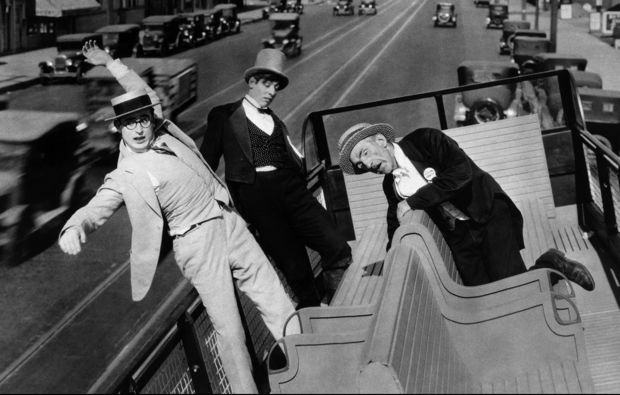
Check out Matt Barry's blog The Art and Culture Of Movies for one of the best appreciations of Harold Lloyd ever:
The Dilemma Of Harold Lloyd


Check out Matt Barry's blog The Art and Culture Of Movies for one of the best appreciations of Harold Lloyd ever:
The Dilemma Of Harold Lloyd
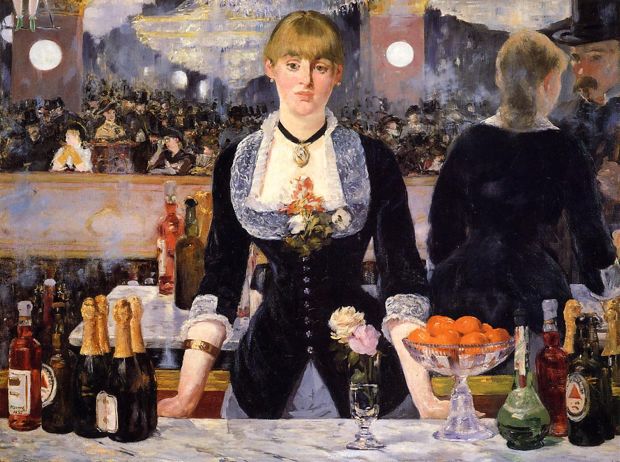
A Bar At the Folies Bergère, 1882. Note the bottles of Bass Ale, which would have been there to tempt English tourists.
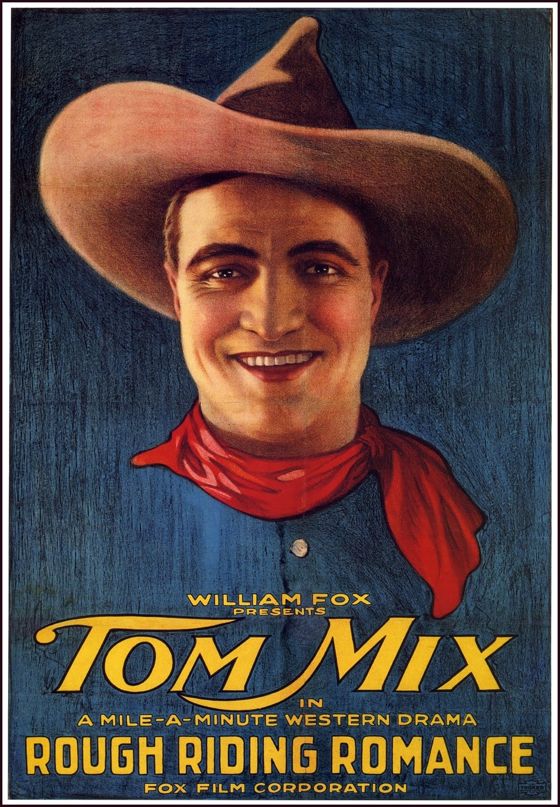
Sure, he's wearing lipstick, but I'm telling you, the guy could ride.
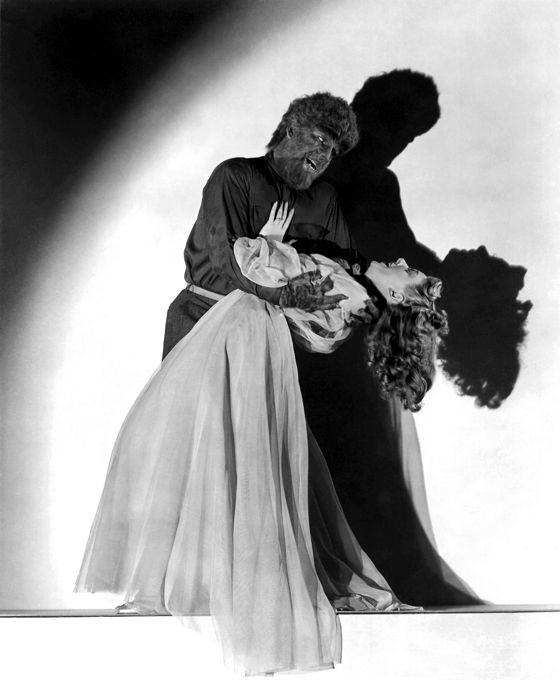
Majestic Micro Movies is excited to welcome a new director into the ranks, the super versatile Matt Barry, and the start of a new series, Monsters In New York. Check it out:
Check out previous Majestic Micro Movies here:
and here:
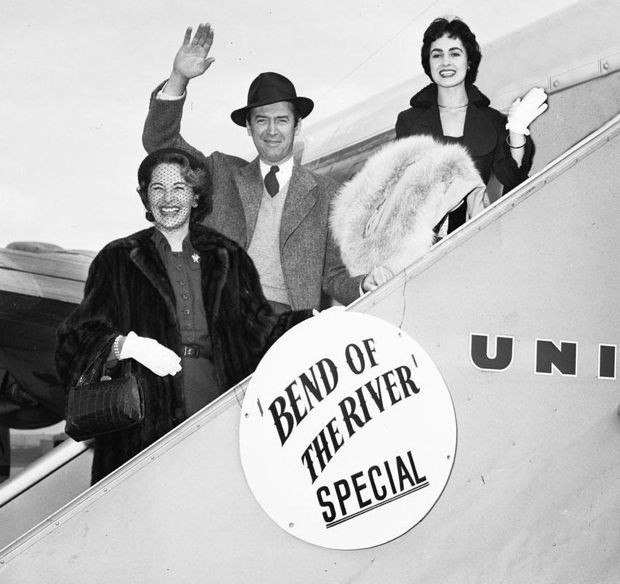
They're off to make a Western! What fun!
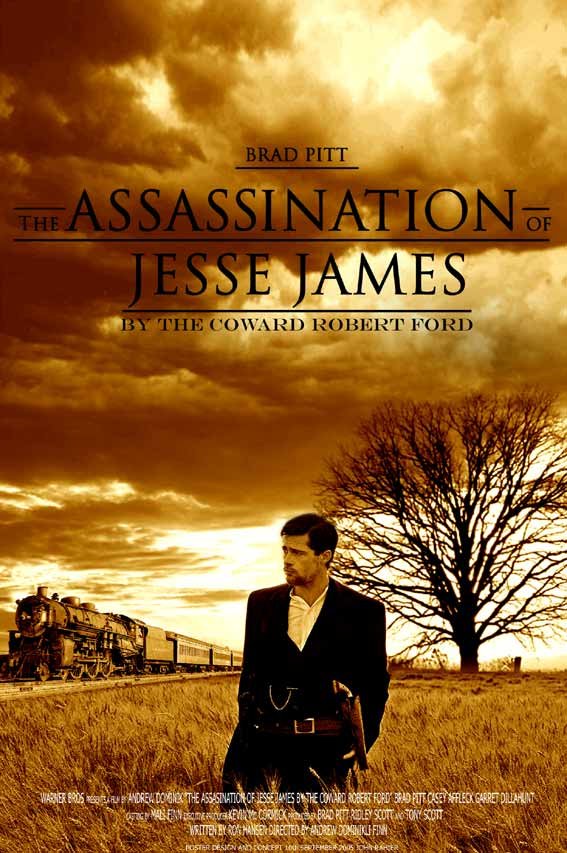
In a review of Legends Of the Fall, which he called “the Monty Python version of Bonanza“, Terrence Rafferty said that making a cynical Western was the equivalent of shooting someone in the back.
Westerns got very edgy and borderline neurotic in the 1950s but they didn't get cynical until the 1960s, reflecting a deep distrust of American government and a sweeping re-evaluation of American values, centered around the war in Vietnam and made keener by the assassinations of several key progressive political leaders. It seemed like a good idea at the time to question whether or not the American dream had always been a lie.
The Western, of course, had always been a genre in which basic American values — self-reliance, common decency, gallantry, justice — were tested and found to be both worthy and enduring. But it was also a genre in which the subjugation of Native Americans was generally celebrated, and obvious parallels could be drawn between that and what we were doing to the Vietnamese people — as they were, for example, in Arthur Penn's Little Big Man. The Western was thus a natural place to start the deconstruction of the American dream.
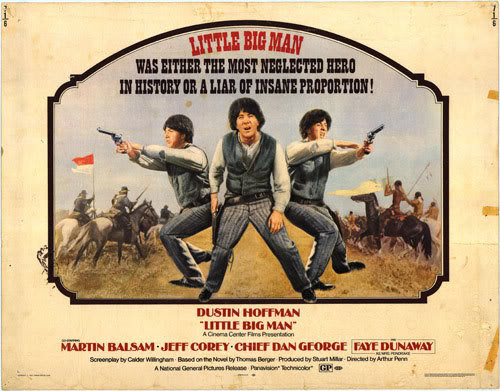
The irony is that by turning the whole myth of the Old West into a lie, American movies lost part of their ability to endorse values which might have aided America in rescuing itself from the perversities of the 60s. Cowboy heroes were, after all, honest, independent and defenders of the weak and the wronged, who often enough in Westerns were exploited and oppressed Native Americans.
The lost myth of the cowboy hero was not replaced by anything even remotely comparable. The anti-hero, who expressed his bona fides only in opposition to establishment values, was an unreliable guide to moral behavior. The free-spirited hippie was not a creature of action but of solipsistic ecstasy, of sensual indulgence.
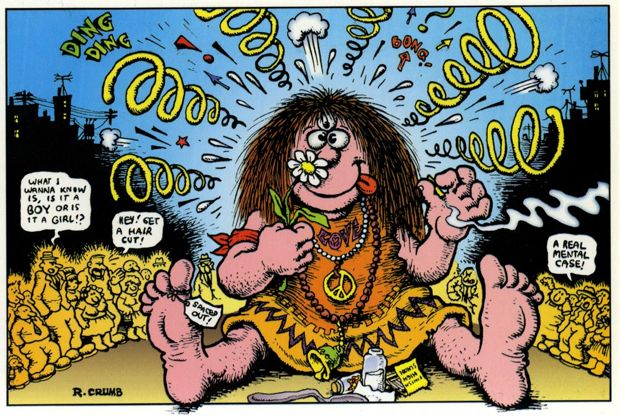
Both these figures were useful cultural icons, channels for feelings that needed an outlet, but they were mythological dead-ends. They didn't nourish the American spirit. When Ronald Reagan rode a horse back into the center of the American dream, even people who didn't care much for his policies succumbed to his imagery. They were just glad to see somebody, anybody, back in the saddle again.
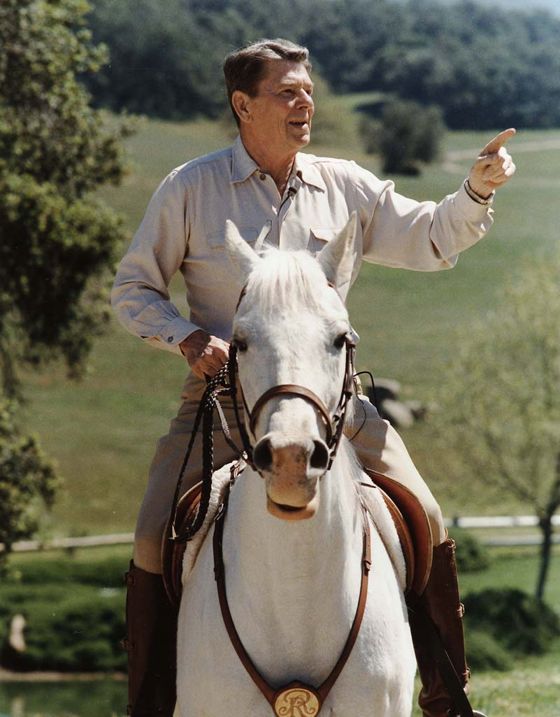
The cowboy hero, however, did not return to the movie screens of America, at least not as a regular player. In Hollywood, the cynical, revisionist or tongue-in-cheek Western was too firmly established as a mark of modernity. When the genuinely heroic cowboy hero did on rare occasions appear, he was greeted warmly. Films like Dances With Wolves, Unforgiven and Tombstone, and the TV mini-series Lonesome Dove, which paid due homage to the traditional Western values, were commercially successful. Dark or satirical or cynical Westerns, like Silverado and Wyatt Earp and the recent The Assassination Of Jesse James By the Coward Robert Ford, were not.
Hollywood drew the erroneous conclusion that people weren't really interested in Westerns anymore — whereas the truth was that they were no longer interested, indeed had never been interested, in dark, satirical, cynical Westerns . . . Westerns which projected modern despair and anxieties back into the American past. Americans have always looked to Westerns for images of redemption.
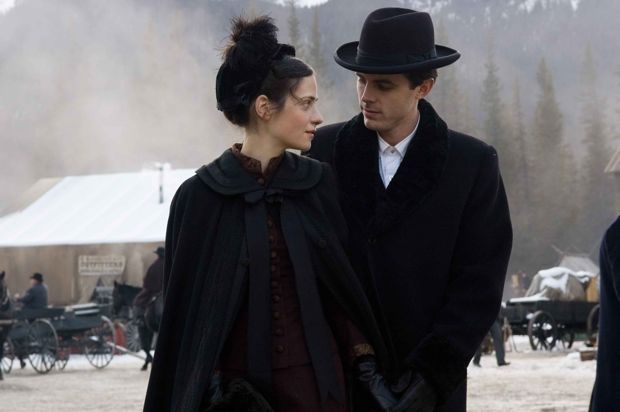
The Assassination Of Jesse James By the Coward Robert Ford offers at its center a brilliant study of collapsed, insecure manhood. It's a timely subject but the one subject a Western cannot embrace. We still look as we have always looked to Westerns for images of an authentic, non-neurotic manhood. A genuine cowboy hero can start out insecure about his manhood, or neurotic about it — like Ethan Edwards in The Searchers — but if he doesn't find redemption, of one sort or another, by the closing credits, we feel cheated, just as we'd feel cheated by a mystery thriller in which the mystery is never solved.
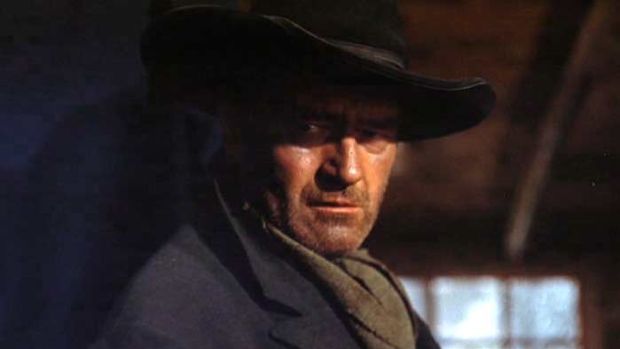
The Western genre was far from exhausted when the cynicism of the 60s shot it in the back. Women, for example, had never been fully integrated into the form, incorporated into the myth. They served as occasions for men to demonstrate virility or gallantry — which are fine things as far as they go — but Westerns rarely showed us the frontier from a woman's point of view, at least not with any consistency.
I would suggest that the role of the Western in the myth of America is hardly played out — it's just been ambushed on the trail. And like any cowboy hero worth his salt, it will get back up on its feet eventually and do what needs to be done.
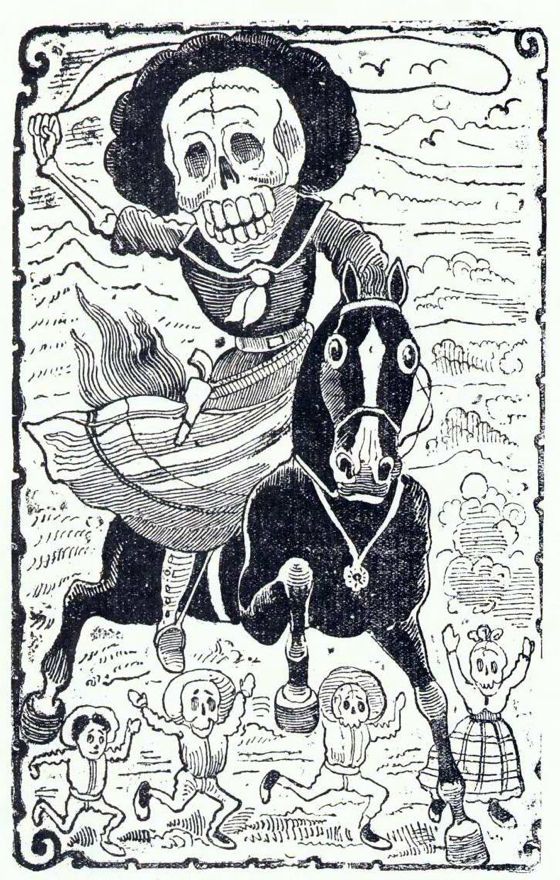
A calavera by José Guadalupe Posada.
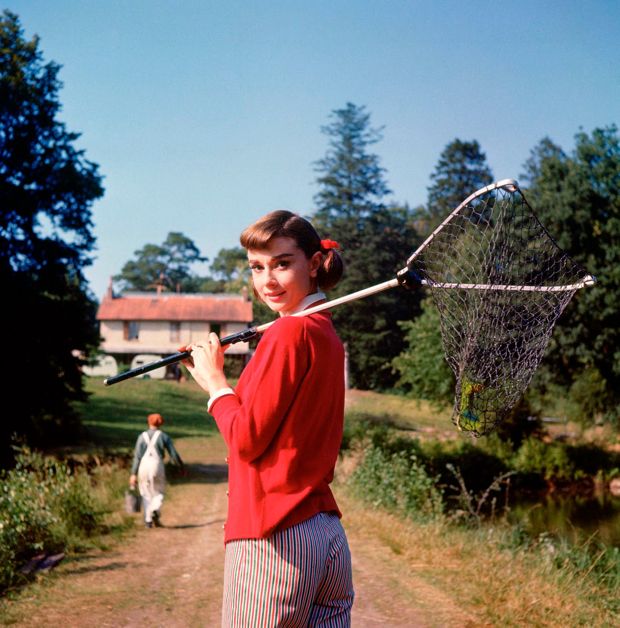
. . . Audrey Hepburn, with a net.
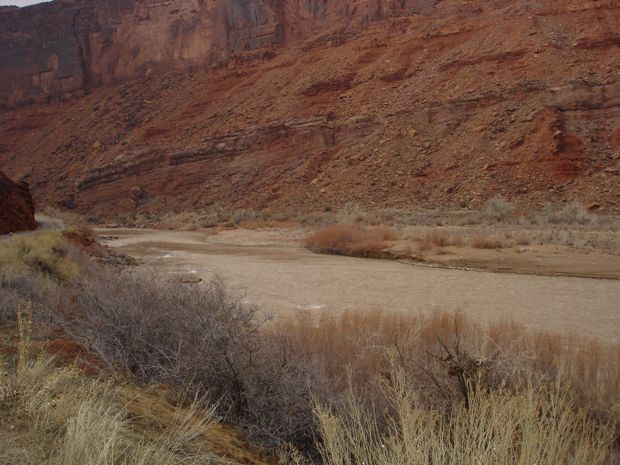
Bob Dylan’s song “Red River Shore”, from the compilation album Tell Tale Signs, has no direct precedents that I know of, but it references a couple of older cowboy songs. The first is “Red River Valley”, a standard from the second half of the 19th Century:
From this valley they say you are going.
We will miss your bright eyes and sweet smile,
For they say you are taking the sunshine
That has brightened our pathway a while.
So come sit by my side if you love me.
Do not hasten to bid me adieu.
Just remember the Red River Valley,
And the one that has loved you so true.
The last line is often rendered as “And the cowboy that loved you so true”.
This song in turn was probably influenced by (or possibly influenced) another cowboy song, based on an old English ballad, “The Girl From the Red River Shore”, whose title is a recurring phrase in Dylan’s song.
Both are songs about loss — the second describes a cowboy who gets into a fight while riding to marry a girl from the Red River shore. Her father, who disapproves of the marriage, has ridden out to meet him with a cohort of gunmen — the cowboy kills several of them and now can never go back to claim his love.
I don’t know how old this second song is — an arrangement of it was copyrighted and recorded by the Kingston Trio in the Sixties but its words have a 19th-Century feel. I also don’t know why the Red River became associated with lost love . . . it was probably just an accident, although “Red River” does suggest the coursing of the blood, the beating of the heart.
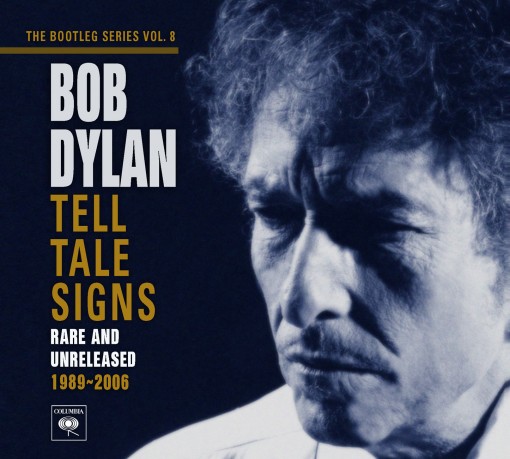
Dylan’s song was recorded during the sessions for Time Out Of Mind but left off that album for some reason. Curiously, it influenced a song on a later album, Modern Times, “Nettie Moore”. The title and the first two lines of the chorus of that song were taken from an 1857 song called “Gentle Nettie Moore”, which is about a man’s longing for a young girl who has gone off somewhere else. The older song references good times past, including boating on a river, and Dylan adds a river to the chorus of his song, after the quoted lines:
Oh, I miss you Nettie Moore
And my happiness is o’er
Winter’s gone, the river’s on the rise
I loved you then and ever shall
But there’s no one left here to tell
The world has gone black before my eyes
This echoes the plight of the narrator of Dylan’s “Red River Shore”, who goes back to the place where he knew his lost love and can’t find anyone who remembers her, or them together. In a final, mystical image, the narrator wonders if anybody anywhere ever saw him, except that girl — suggesting that he only had authentic being in her eyes, that if she isn’t looking at him he’s dead. This is why that last verse references Rabbi Jeshua of Nazareth, someone who knew how to bring the dead back to life. If the girl from the Red River shore is really gone, then the rabbi might be the only hope of life left, a dubious hope in the narrator’s estimation.
The song thus becomes something much more than an exercise in nostalgia, in romantic longing — it becomes a kind of cry of existential terror.

One day, as you drift into your fifties, you wake up and realize that you are closer to the end of things than to the beginning. It’s not necessarily a bad or depressing realization, but it does induce different kinds of thoughts than you’ve ever had before. It makes you think seriously about what your life might add up to, when all is said and done. Lost loves come back to haunt you. For me these ghosts are often sweet revenants, because they remind me of the times I did feel most alive, of the times when my being seemed fullest.
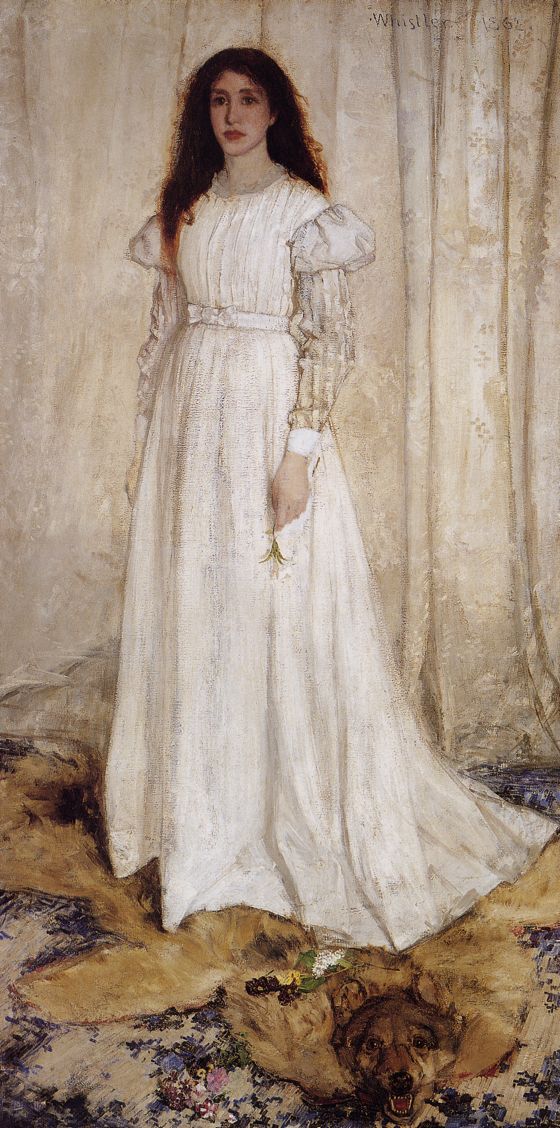
In “Red River Shore”, Dylan has written a great song about this phenomenon. It will certainly speak most clearly to people who are nearer to the end of things than to the beginning — but the truth is that this could be any of us, for all we know, whatever age we’re at, and all of us will get there eventually.
There’s a girl (or guy) from the Red River shore in every life, and eventually he or she will become a ghost, even if it’s only the ghost of the youth of someone you’ve always been with. Eventually that ghost will show up at your door one day and say, “Remember me?” . . . and the question will really be, “Do you remember who you were when you were most alive?” It’s an important question — since that memory might be the only thing you’ll take with you from this world, the only thing worth taking with you from this world.
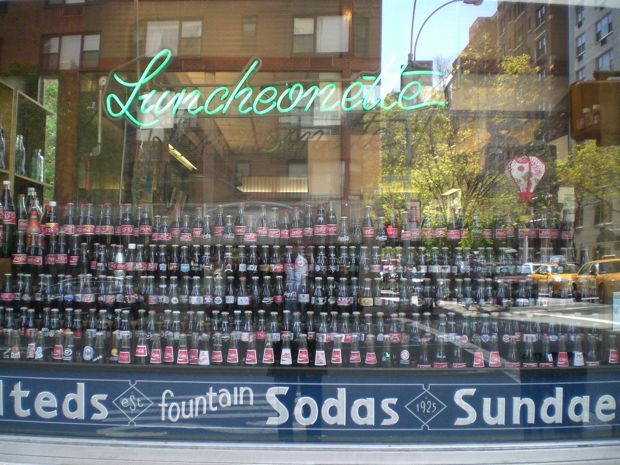
My friend Mary Zahl was in New York last week and snapped these pics of a store at 83rd and Lex — sent them along to me knowing of my deep and abiding love of Coca-Cola.
I'm actually not a big fan of the Coca-Cola that's made in this country these days, sweetened with corn syrup. The old-fashioned Coca-Cola, sweetened with real sugar, is my drink. It's still made in Mexico, and other countries, and can be had here if you look for it.
My local chain grocery store, which has a lot of Hispanic customers, just started carrying it — to my great delight. It's a quality-of-life issue for me. The Cokes in the window of this candy shop look like they might be Mexican Cokes — you usually find them in these tall 12-ounce glass bottles, never in cans.
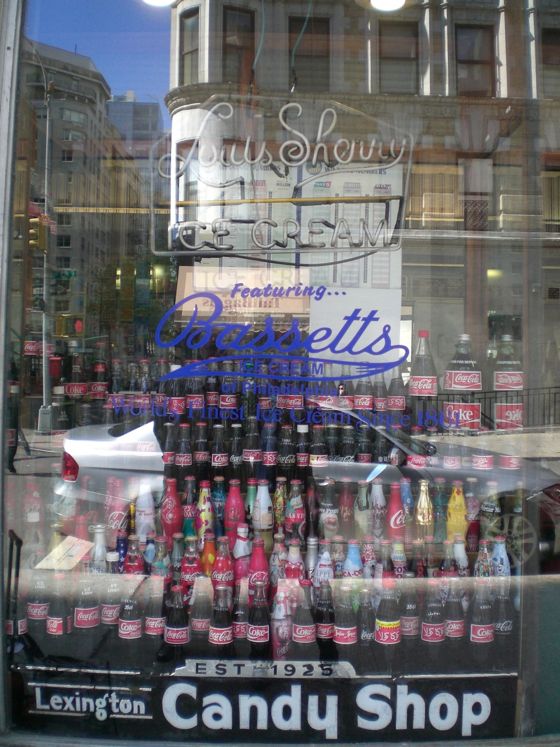
My love of the Coca-Cola logo involves other issues — memories of its ubiquity in the South of the 1950s when I was growing up, and a sense that it's a kind of alternate American flag, a symbol of my country . . . my country right or wrong.
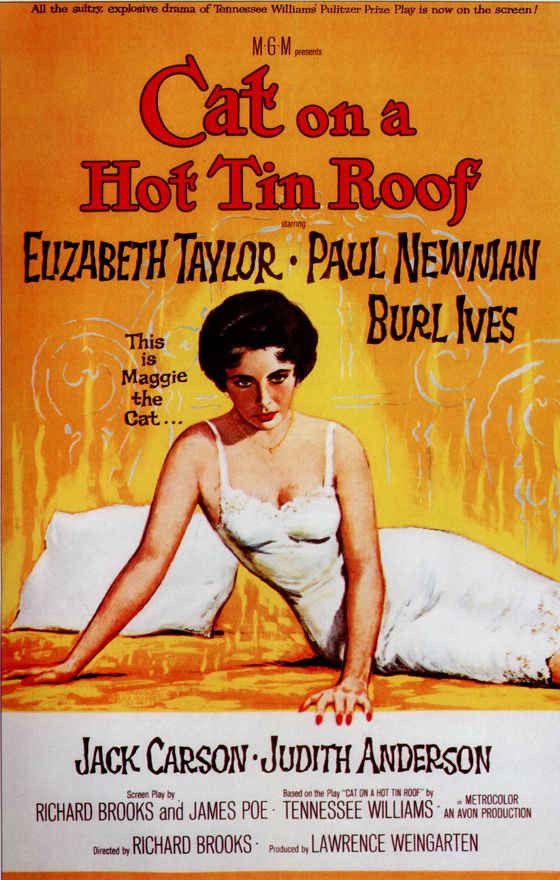
The performances by Paul Newman and Elizabeth Taylor in this film are stone cold brilliant. The supporting cast is pretty damned good, too.
The filmmaking sucks, with over-lit sets, including some very unconvincing exteriors built on a soundstage, and nervous cutting that distracts from the playing of the scenes. And yet one has to marvel that such pitch-perfect performances emerge from editing like this — it's very expertly done.
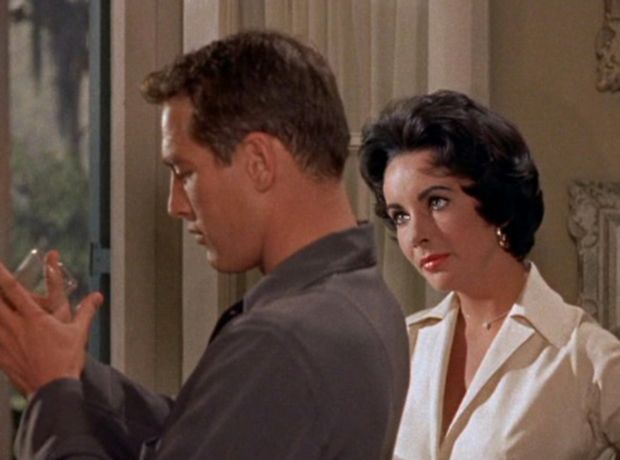
The play is a hoot — rarely persuasive as a psychological portrait of a dysfunctional family but wildly entertaining and eventually moving. The self-dramatization and outlandish language will be familiar to anyone who grew up in the South back in the last century, where the storytelling tradition often spilled over into the theatrics of everyday life. The play's explicit references to homosexuality were removed for the screen, which makes the remaining subtextual implications seem coy and dishonest.
The cool, jazzy score is uncredited, due to a musicians' strike in Hollywood at the time. What's used was lifted from the MGM vaults — most of it was by André Previn, recorded for the soundtrack of a 1949 noir called Tension. Parts of the Tension score were released as extras on the soundtrack recording of Bad Day At Black Rock, whose score Previn also wrote.
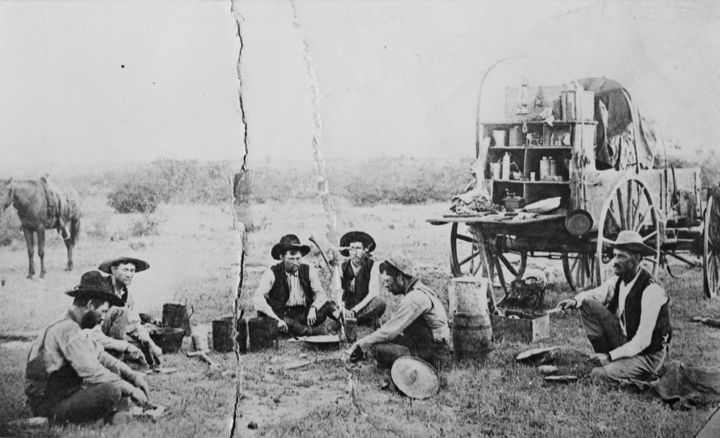
. . . on the Texas plains in the 1880s.
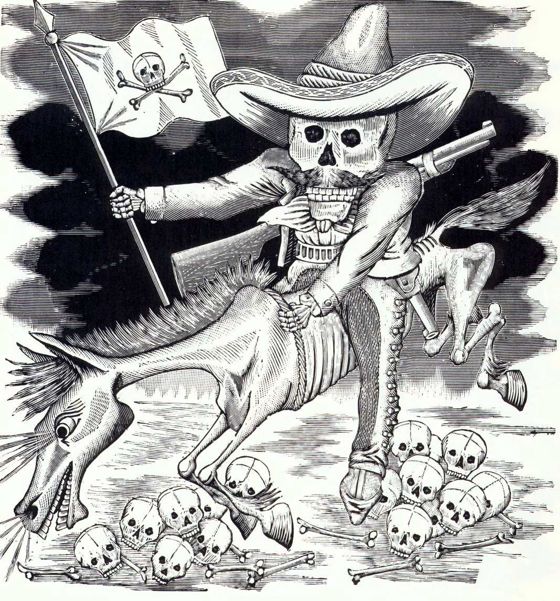
Zapatista calavera, by José Guadalupe Posada, early 20th Century.